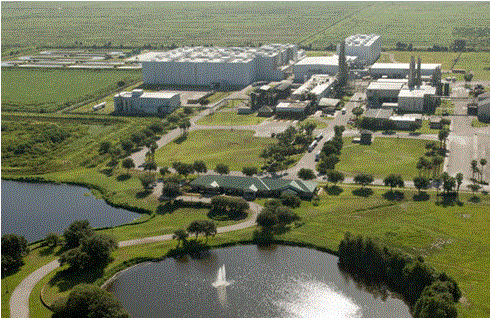

When it came to managing change at Southern Gardens Citrus Processing (SGC), there was no process, no rules, and no control. With little to no project management, scope creep was rampant and projects never ending. Individual departments conducted projects in a vacuum without real business justification and little consideration for the impact of those changes throughout the organization. No collaboration between departments lead to unintended consequences. No documented project history or reasoning meant the neither successes or failures could be traced. Consequently, resources were wasted and rework commonplace.
That’s how it used to be according to Jim Sullivan, SGC Facility Engineering Leader, at The Digitization of Asset Performance Management workshop at ARC’s 22nd Annual Industry Forum. Since, those good old days, things have changed considerably and is now reflected in the company’s mission statement, “Continuously improve and become the low-cost supplier of high-quality citrus products to our customers, while maximizing returns to our shareholders,” that has guided the company to where it is today. SGC was recently recognized for its efforts with Uptime Magazine’s 2017 award for Best Asset Management Program.
A unit of U.S. Sugar, SGC is a global supplier of premium, not-from-concentrate (NFC) Florida orange juice. The facility is capable of processing up to 180 million pounds of oranges annually, includes 56 one million aseptic storage tanks, and ships/receives over 100,00 truck tankers per year. The seeds of change were planted at SGC way back in 1995 in the form of a maintenance excellence initiative focused on project and asset management. Assets were cataloged and estimated asset remaining useful life estimated. Management review of assets approaching end of life determined if the asset would be incorporated in the 5-year capital plan or deferred. Capital plan priorities are determined based on remaining asset life, business project need, or an approved change in existing assets. While this initiative paid benefits, the company wanted to implement a strategy for continuous improvement.

A management of change (MOC) process instituted in 2006, began with combining two continuous improvement processes; improvements reports and the change management portion of its process safety management (PSM) process. In addition, maintenance, reliability, and engineering departments were consolidated for greater control over their collective activities. Process mapping was performed in conjunction with SAP implementation. Adopting a process oriented view of operations enabled SGC to place greater emphasis on improvement.
SCG employs a 4C philosophy to MOC for all projects and asset requests: communication, collaboration, consensus, and commitment. Communication involves formulizing processes with defined roles and responsibilities and an investigative approach to asset issues. The maintenance, reliability and engineering teams collaborate during the implementation and commissioning phases of a project to gain a better appreciation of what lies ahead. Management looks for a consensus among the group for recommendations prior to approval. The process requires a commitment from the group to ensure justification of actions, on-time project completion, and validation. The process relies primarily on input from root cause analysis (RCA), changes in existing assets, business needs, and PSM requirements.
Continuing its maintenance excellence journey, SGC implemented a strategic asset management plan (SAMP) in 2015. To ensure alignment with company objectives and policies, the plan is directed by executive leadership. The SAMP includes the 5-year capital plan, asset register, and the MOC process.
The benefits realized at SGC are many. 98 percent of project justification has been successful validated with little to no rework required. The company has not hired outside mechanical and electrical contractors for five years because it has been successful relying only on internal resources. It has been able to reallocate 13 percent of its CapEx budget in addition to savings on labor. It utilizes a best practice approach to auditing by hiring objective third parties for the task. Documentation has added a history of events that was previously lacking. The facility is better prepared for adoption of IIoT technologies and systems due to increases in automation.
Among the lessons that Jim imparted to the audience include change the culture, first and foremost. A process oriented culture has provided a path to sustainable improvement at SGC. Any variations in process design versus implementation must be fully documented to provide a history of events. Processes should be continually audited and updated accordingly. Training, training, training – nothing more to be said here or here, communicate, communicate, communicate! Lastly, the support of executive management is critical for direction and sustainability.
Congratulations to Jim and his team for their accomplishments! Keep up the good work.
This is the second in series of blogs dedicated to the Digitization of Asset Performance Management and MOC. Check back soon for more.

